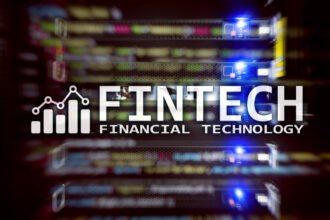The Development and Growth of High-Frequency Trading
- 1 Evolution and History of High-Frequency Trading
- 2 The Origins of High-Frequency Trading
- 3 Advancements in Technology and Market Data
- 3.1 High-Frequency Trading Strategies
- 3.2 The Future of High-Frequency Trading
- 3.3 Emerging Technologies and Strategies
- 3.4 Ethical Considerations and Public Perception
- 4 Conclusion
High-frequency trading (HFT) has revolutionized financial markets with its lightning-fast speed and advanced algorithms. In this article, we will explore the development and growth of high-frequency trading, its advantages, challenges, regulatory measures, and its future. To effectively invest and trade Bitcoin, you may use a reliable trading platform such as fbc-algo.com.
Evolution and History of High-Frequency Trading
High-frequency trading (HFT) has a fascinating evolution and history that traces back several decades. Let’s delve into the key milestones and advancements that have shaped this dynamic field.
The Origins of High-Frequency Trading

The roots of high-frequency trading can be traced back to the early 1970s when electronic trading platforms started emerging. These platforms allowed traders to execute orders electronically, replacing traditional floor-based trading. However, the concept of high-frequency trading as we know it today was still in its infancy.
Early Adopters and Pioneers
In the late 1980s and early 1990s, advancements in computer technology and connectivity laid the foundation for high-frequency trading. A handful of early adopters and pioneers began leveraging these technological advancements to gain a competitive edge in the financial markets.
These pioneers developed sophisticated trading algorithms that could process vast amounts of market data in real time. By analyzing market conditions and identifying short-term trading opportunities, they were able to execute trades at lightning-fast speeds.
Advancements in Technology and Market Data
As technology continued to advance, high-frequency trading evolved rapidly. The availability of faster computers, improved network infrastructure, and increased data storage capacities enabled traders to process vast amounts of market data with unprecedented speed and accuracy.
Moreover, the proliferation of electronic exchanges and the digitization of financial markets provided high-frequency traders with ample opportunities to capitalize on fleeting price discrepancies. With the ability to access multiple exchanges simultaneously, they could exploit small differences in prices across various trading venues.
High-Frequency Trading Strategies
High-frequency trading strategies vary in complexity and approach. Market-making, a popular strategy, involves providing liquidity to the markets by simultaneously placing buy and sell orders. This strategy aims to profit from the bid-ask spread and the volume of trades executed.
Arbitrage is another common strategy employed by high-frequency traders. It involves exploiting price differences between related financial instruments, such as stocks and futures contracts, across different markets. By capitalizing on these price inefficiencies, traders aim to generate profits with minimal risk.
Statistical arbitrage is a more sophisticated strategy that relies on statistical models and historical data to identify patterns and correlations in the markets. By executing trades based on these models, high-frequency traders seek to profit from short-term market movements.
The Future of High-Frequency Trading
The future of high-frequency trading (HFT) holds both exciting possibilities and important considerations. As technology continues to evolve at a rapid pace, the landscape of financial markets will undoubtedly be shaped by advancements in high-frequency trading strategies and infrastructure.
Emerging Technologies and Strategies
Artificial Intelligence (AI) and Machine Learning (ML) are poised to play a pivotal role in the future of high-frequency trading. These technologies can process vast amounts of data, identify patterns, and adapt trading strategies in real time. By leveraging AI and ML, high-frequency traders can gain a deeper understanding of market dynamics and enhance their decision-making capabilities.
Moreover, the integration of big data analytics and natural language processing can enable high-frequency traders to incorporate news sentiment and social media data into their trading algorithms. This incorporation of alternative data sources can provide valuable insights and potentially improve trading performance.
Ethical Considerations and Public Perception
As high-frequency trading continues to advance, it is essential to address ethical considerations and public perception. The notion of fairness in market access and the potential for market manipulation need to be carefully monitored and regulated.
Transparency and accountability should be prioritized to ensure that high-frequency traders operate within ethical boundaries. Regulators and market participants need to work collaboratively to establish clear guidelines and standards that promote integrity and fairness in high-frequency trading
Conclusion
The development and growth of high-frequency trading have been shaped by advancements in technology, connectivity, and data availability. Early adopters and pioneers paved the way for the utilization of sophisticated algorithms, enabling traders to execute trades at lightning-fast speeds.
Today, high-frequency trading plays a significant role in financial markets, providing liquidity, enhancing price discovery, and contributing to overall market efficiency. However, it also poses challenges and risks, which we will explore in the subsequent sections of this article.

















